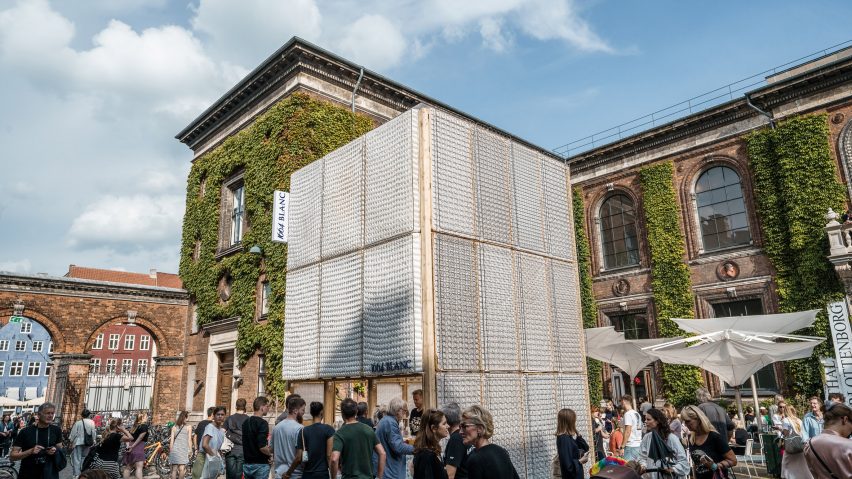A bar made out of old IKEA mattresses has won the architecture prize at Chart 2019, ahead of structures built from latex, salt, paper and jute fabric.
Sultan is one of five food and drinks kiosks built by young Danish architects and students for an exhibition at Chart, an art and design fair that took place in Copenhagen over the weekend.
The challenge was to experiment with how reusable or recycled materials could be used to create more sustainable architecture.
Anne Bea Høgh Mikkelsen, Katrine Kretzschmar Nielsen, Klara Lyshøj, and Josefine Østergaard Kallehave designed and built theirs using every component of IKEA's bestselling mattress.
The designers hoped to make a statement about "mindless consumerism". They wanted to highlight the issues in an economic system where it is cheaper and easier to buy new products rather than to recycle old ones.
The project is named Sultan, like the mattress, and repurposes its metal springs, foam stuffing and fabric. These form multilayered, textured walls for the double-height, timber-framed structure.
Judges awarded the project first prize in the architecture contest, after being impressed with the way it made recycling completely central to the design.
'The Sultan project was a clear winner both because it is conceptually very strong and because its fabrication is very precise," said BIG partner David Zahle, who was one of the judges.
"IKEA is one of the biggest players in the world, and if you want your idea to really make a difference, you need partners with a big reach," he added.
All five of the student-built pavilions were in use for the three days of Chart. Sultan served as a bar for 1664 Blanc, while the other four offered up other varieties of food and drink.
A kiosk made from recycled paper served up Japanese food and sake. Called Rock Paper CNC, it was built by Diana Smiljkovic, Gustav Kjær Vad Nielsen, Jonas Bentzen and Haris Hasanbegovic, along with artist Oskar Koliander.
The structure comprises a cluster of five timber-framed towers, all clad in 30-centimetre-square, recycled-paper tiles.
These tiles are produced through a process of mixing, compressing and baking. These were made using waste sourced from the offices of architects and engineers, including Arup and COBE.
Cristina Román Díaz and Frederik Bo Bojesen used salt in the making of Salaria, a kiosk serving up salt-water oysters. It creates a floor surface that crunches underfoot, and also coats fishing nets to create a shelter overhead.
Recycled plywood was sourced from Roskilde Festival to build the building's A-shaped frame, while the discarded fishing nets were rescued from Copenhagen harbour.
Josefine Rita Vain Hansen and Marie Louise Thorning used latex to create their design – a gin bar serving up Nordic-inspired cocktails.
Called Cell, the structure can be inflated and deflated like a balloon.
Latex also features in Snug as a Bug in a Rug, designed by Mathias Bank Stigsen and Andreas Körner.
The building is clad in a latex-coated jute fabric, designed to invite touch. During Chart, it served up vegetarian burgers from Gasoline Grill.
Chart 2019 took place from 30 August to 1 September at two venues, Charlottenborg and Den Frie.
The five pavilions were selected from 54 proposals. They were built in 72 hours, with technical support from Arup, in the courtyard outside the Charlottenborg venue.
At previous editions of Chart, the space has also accommodated an inflatable pavilion by BIG, an algae-producing pavilion by Space10 and a mini garden by Husum & Lindholm Architects.
Photography is by Joakim Züger.

